Dealing with Asbestos Cement
Asbestos Cement Buildings
Call The Experts!
Use the tabs on the right to navigate this page
What is asbestos?
Asbestos is a naturally occurring mineral that has been used in construction since the 1940’s, with over 5.3 million tonnes imported into the UK for use in construction materials this is a now huge problem. However, landfill can only take so much and with only 2 sites in the UK the cost of removal and landfill is rising all the time.



What type of asbestos do I have?
There are 3 different types of asbestos; Crocidolite (blue), Amosite (brown) and Chrysotile (white) but the main type used in asbestos cement sheets is generally Chrysotile (white) which is the least harmful of the 3. Any content in any building material produced greater than 0.01% is classified as a contaminant by HSE so must be monitored yearly and when disruptive to buildings and or people who work in them it must be treated.
Your asbestos roof probably has some or all of these issues:
ASL are aware of the various situations you and your commercial building might in regarding asbestos. If any of the following pictures illustrate your particular asbestos problem, you should give ASL Commercial Roofing a call and find out how we can help.
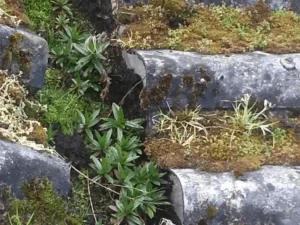
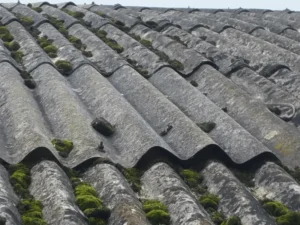

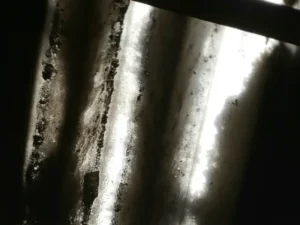
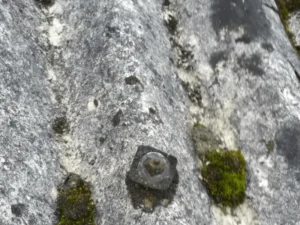
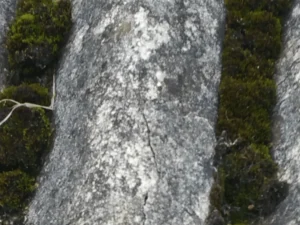

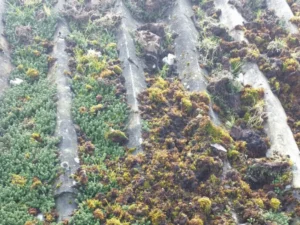
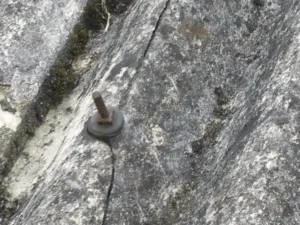
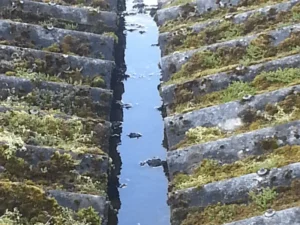
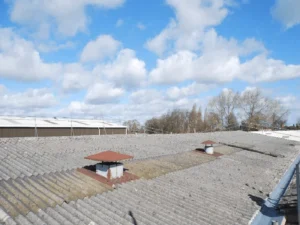


DO YOU HAVE AN ASBESTOS ROOF?
Our expert team are on hand to help. Contact us today!
There are four options when considering buildings with asbestos cement sheeting:
-
Do Nothing
Depending on its age, profile and the direction that the roof faces can affect the integrity and condition of the sheets and in most cases the sheets are breaking down, gathering more moss and lichen each year and will start to leak and fail in the future.
-
Remove & Replace
This is the most expensive option being twice the price of asbestos encapsulation (see below). In most circumstances, the programme duration can be as much as twice the length of alternatives (can be up to 60 weeks for re roofing versus 30 week for asbestos encapsulation). Moreover, this has a huge affect on the business situated within the building once the roof is removed, due to weather and possible downtime within the building. In addition to this there is a huge risk of fibre release when the sheets are being removed. This method is also notifiable to the HSE meaning that they need to make sure it is managed at every stage.
-
Over Cladding The Roof
A heavy metal frame is created over the old asbestos and fixed by drilling many holes in the roofing sheet and then fitting metal panels above. Many holes mean massive risk of fibre release within the building. HSE frowns upon this method due to technique. Structurally the roof will weigh much more due to the added steel work and metal panels, often a structural survey is required which may determine that further steel is required to support the new structure. The key issue is that the asbestos is being buried and due to not being treated, it will continue to break down. Moisture entrapment within the moss and asbestos cement sheet can speed up the rusting process of metal sheets. Sheets generally only hold a 10 year life span before needing to be replaced or coated. This results in further cost down the line.
-
Asbestos Encapsulation
Asbestos Encapsulation is the most cost & time effective solution. Due to the asbestos cement sheets being encapsulated, under the Land Remediation Relief scheme you can claim back 150% of the contract cost against profits of the business. In addition, asbestos encapsulation takes half the time of re-roofing or over cladding the roof. There is minimal risk of fibre release within the building due to the closed head shrouded cleaning and filtration method used by our specialist asbestos team. There is minimal differential in the weight of the roof once it has been encapsulated. With removal of wet moss during the cleaning process this actually eliminates some weight from the roof. System is available in a variety of colours for endless design options.
The best solution in pictures
ASL Commercial Roofing are proud to offer and install our premium Asbestos Encapsulation treatment to your asbestos cement building – take a look for yourself at how it really is the best solution.



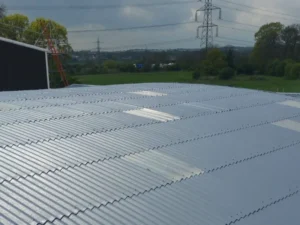
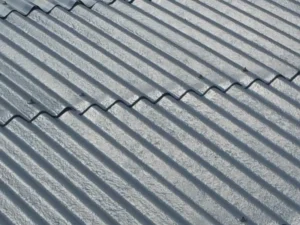
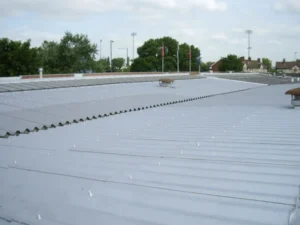
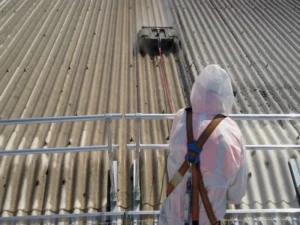
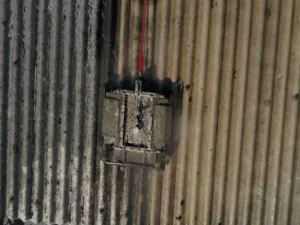
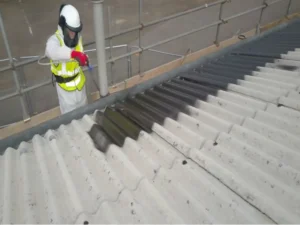
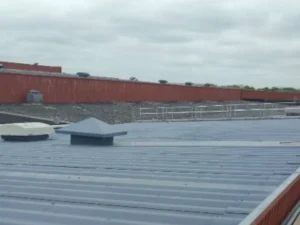
The benefits of Asbestos Encapsulation
There are several reasons why you should choose ASL Commercial Roofing to carry out Asbestos Encapsulation on your building as a premium, quality service using only the best products in the industry.
-
Cost Effective
The most cost-effective method of treating asbestos cement roofs and walls.
-
Guarantees
Up to 20 year Guarantees
-
Tax Refund
Tax refund through LRR (Land Remuneration Relief) of 150%
-
Colours
Any RAL colour available
-
Health & Safety
Meets highest HSE requirements for both cleaning and filtration
-
Technology
Systems are SEBS Based using Nano Technology driving agents
-
Longlasting
Systems drive into the core of the Asbestos cement sheet re-structuring the panels making them waterproof and UV stable
-
Maintenance
Can be overcoated at a fraction of the cost at the end of the guarantee
-
Durable
Moss & Lichen cannot grow on the system
-
Protected
Seagull guano proof. System does not break down when attacked by uric acid
FAQ'S
Here at ASL Commercial Roofing we know that you might have questions – please see the most frequently asked ones. If these still don’t address your particular query please get in touch.
Can an asbestos roof be repaired?
In most cases, yes. Asbestos cement buildings are common problems and most people assume they need to be removed and replaced. Whilst true that asbestos can be dangerous, when treated correctly it can then be treated again and again with the same, or different techniques. Cracks, holes and roof lights can be restructured and sealed, or individual sheets replaced with a GRP profile pieces to allow for full encapsulation.
Why not just over-clad the roof?
Over-cladding is an option for making the roof watertight and can look good when complete. There are several reasons why we do not offer this service. Firstly, it’s like sweeping the dirt under the carpet, no-one can see it but it’s still there. Burying the problem for the next 10 years or so is only a temporary measure. The asbestos is still there, still rotting and usually with moss and lichen now sandwiched in an insulated void to rot and smell.
There are however 2 even greater risks:
- Hundreds or even thousands of holes must be drilled through the asbestos to fix the frame into place.
- The new structure adds both weight and height to the building requiring a structural survey and approval. Wind uplift calculations and interstitial condensation calculations are also recommended.
What is the most cost effective method of treating my asbestos cement building?
There are 3 options each with their own merits and issues, these are;
- Remove and replace with an insulated panel
- Over-clad the asbestos
- Clean and encapsulate the asbestos
From our experience, encapsulation is far more cost effective. The cost for removal and replacement will often be double that of encapsulation with over-cladding being around 40% more expensive, as a rule. With a huge tax break available for treating the asbestos (150% against pre-tax profits) this makes encapsulation even more attractive financially.
What sort of guarantee can I get on each option?
Option One offers up to 40-year product guarantee and if maintained correctly should last that period (if using stainless steel fixings).
Option Two (over-clad) has only a 10-year product guarantee and suffers from cut-edge corrosion and fixing issues.
Option Three (Asbestos Encapsulation System) has an up to 20-year options.
What are the health & safety issues?
Each of the three options above have differing degrees of risk and the HSE considers each in a different way, defined by whether the project is notifiable to the HSE or not. A notifiable system would require you informing the HSE prior to the works commencing and throughout the project for safety management and continuous risk assessment.
The three options are;
- Removal and installation of a new panel is notifiable with the HSE due to the almost certain risk of asbestos fibre release during removal. Air monitoring, crash decks and very stringent rules apply to this category.
- Over-cladding is also notifiable and is being frowned upon by many HSE inspectors due to the large amount of fibre release potential when drilling so many holes. If they agree to this method being used, they will visit the site numerous times to ensure the works are being carried out safely. Whilst reassuring, the slightest safety concern can have the site shut down and the project delayed or stopped.
- Encapsulation is Non-notifiable. The HSE considers this option a lot safer than over-cladding or removal, so much so that they don’t require notification of these works taking place. It is our policy to inform the HSE on our projects anyway as our methods are very tight to the HSE guidelines and this ensures their support in our scheme. They can after all, drop onto any site, at any time, to assess H & S issues.
